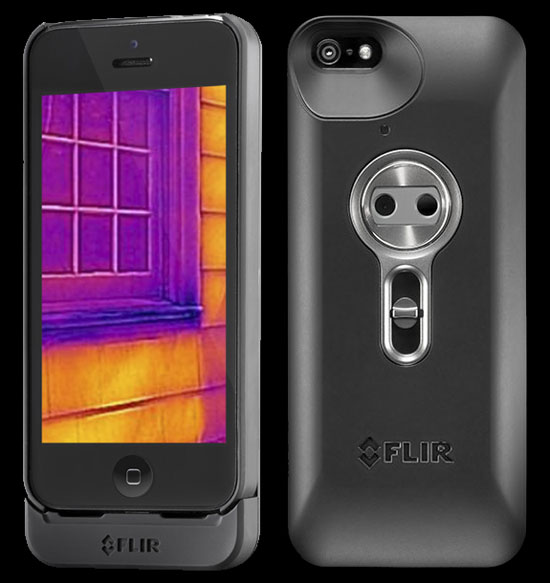This is SO cool.
FLIR Systems now has an iPhone add-on that turns your iPhone 5 or 5s into a thermal imager, for $349. (In contrast, my FLIR i7 imager was, as I recall, $2,000.)
Called the “FLIR One“, I think these are going to be pretty popular, and I’m sure the price will come down over time.
There are many uses (besides the gee whiz factor). You can see in the dark with it, see small animals in the woods, identify subtle temperature changes associated with water leaks, overloaded electrical wires, find insulation voids in your walls, air leaks around windows and doors, tell when your girlfriend or wife is really mad at you, and open up a whole new world of cat photography on Facebook.
Who knows? Maybe we will even have reports from all over the world documenting the existence of the atmospheric greenhouse effect.
Contrary to the TV series 24, though, you can’t see through solid surfaces like walls and roofs with it. You can’t even see through glass windows, which are also opaque in the infrared. But anything that subtly changes the temperature of the surface of a wall, like the presence of pipes or studs, can usually be seen.
I suspect that law enforcement and the bad guys will both be using it to gain an advantage. I won’t go into the ways in which that might happen.
The specifications for the FLIR One show pretty high sensitivity (0.18 deg. F), but a fairly restricted range of temperatures it will sense (32 to 212 deg. F). On the plus side, it also has a visible light camera and offers a visible/IR blending option for photos. It comes with its own battery, which is kept separate from the iPhone battery system.
Just to be clear…this is not an “App”…it can’t be done with just software. It has a microbolometer sensor array in it which receives infrared energy through a IR lens and measures the resulting tiny changes in temperature at each element in the array, then converts those changes to a pretty accurate estimate of temperature.
Since I recently switched from iPhone to Samsung, I’ll have to stick to my FLIR i7 imager for now. Oh well.

 Home/Blog
Home/Blog




